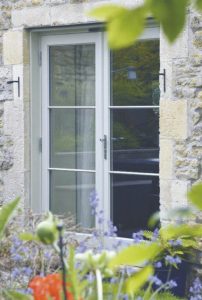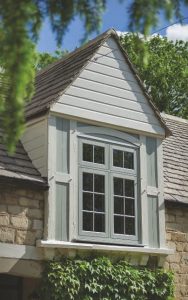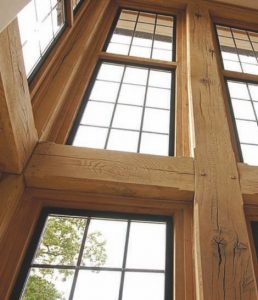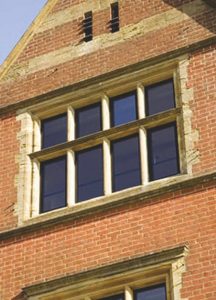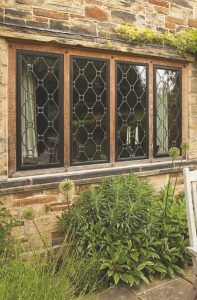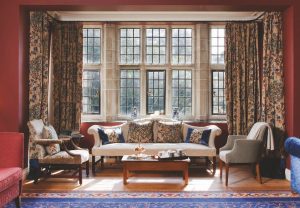Bring in the Light
Often referred to as the eyes of a house, windows play a vital role in defining the character of a period property
Original windows were made using traditional techniques that are hard to imitate today due to modern building regulations. So this means it’s vital that every effort is made to preserve and maintain original windows wherever possible. However, if they are too rotten to repair, inappropriate modern designs are present, or you are extending, you need to source authentic-looking replacements.
Upgrading existing windows
Old windows inevitably face threats such as warping, rotting, sticking, chipping and corrosion. But before automatically replacing, look at either repairing or upgrading.
The first question to ask is whether your windows need restoring. For period homes this is often the case, but it can be tricky to restore original windows without damaging the character of the home. Fortunately, there are companies which specialise in working with older windows – a job most definitely best left to the experts.
If wood windows are in a reasonable condition, they can be draught-proofed and repaired. This improves functionality, security and efficiency at a fraction of the cost of replacement.
Styles of window
The most familiar window types in period homes are side-hung casements – wood or metal – which swing open like a door, and vertical sliding timber sash windows, which consist of two frames or ‘sashes’, each with pane of glass held together by wooden glazing bars, which slide vertically in grooves and are held open by weights and pulleys concealed in a timber box frame.
Casement windows
The casement was the earliest form of fixed window and refers to the framed section that holds the glass in place, so can also apply to a bow, bay, dormer or oriel. The verticals supporting the casements, which may be stone or wood, are called mullions. Casements are unsuitable for large areas of glass, hence the popularity of the sash window.
Sash windows
The invention of the sash window in around 1670 was one of the most radical changes to be made to the exterior of the British house, sometimes even replacing old windows on existing houses. It was the perfect match for the symmetry of Classical architecture, as window voids could be filled evenly with modular square and rectangular panes. As a general rule, mid-Georgian sash windows had six-over-six, or eight-over-eight panes and Regency windows were usually four-over-four. Improved glass manufacture reduced panes to two-over-two, and finally just one large pane over another.
How to get the design right
With period properties, like for like is always best. If you are looking to rectify inappropriate windows, study nearby properties from the same era to ensure the style of window matches the rest of the building. Proportion, glazing bars and the glass itself all contribute to the character and overall appearance of a window, so all components must be addressed when thinking about replacements.
All aesthetic aspects should be considered, including selecting the right timbers, colours and decorative options, while also taking into account neighbouring properties so your home is in keeping with its surroundings. If in doubt, ask your local conservation officer for advice.
Do I need planning permission to change my windows?
Usually, replacing period windows with like-forlike replicas will not require permission, but it may be needed where permitted development rights are restricted. If you live in a Conservation Area, planners can be very particular about the new replacements being as close to the original as possible, and if there is an Article 4 directive, you will need to apply for permission.
Listed building consent is always required to replace windows in listed properties. To gain permission to replace any listed windows or doors, homeowners need to prove that the existing ones are beyond repair or that they are losing too much heat.
Take advice from a reputable company that has experience in window design and construction, and remember that planning officers can also advise on what is and is not acceptable.
For complete new windows, the company making and installing them must be registered with FENSA. Once the work has been carried out you should receive a FENSA certificate through the post, which you will need if you sell the property in the future.
New sashes or casements fitted into existing frames are classed as refurbishment, and so this work does not require certification.
What about security?
All new windows should be fitted with appropriate locks. Ground floor window locks should be key operated, whereas windows on the first floor should have egress locks. Ensure any surface locks are secured to the frame rather than the window, and sashes are fitted with stops and bolts. Alternatively, an integral locking system located within the frame can offer greater security. Toughened safety or laminated glass is also an option.
Stockists
- Custom Made Joinery
www.custommade-joinery.co.uk - The Heritage Window Company
www.theheritagewindowcompany.co.uk - Orchard Windows
www.orchardwindowskent.com - Orlestone Oak
www.orlestoneoak.co.uk - Fabo Sanctuary
www.fabosanctuary.com - Clement Windows
www.clementwindows.co.uk
Posted in: Property
